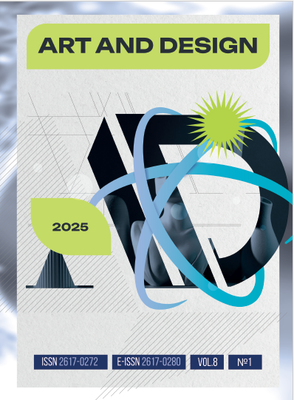Sketching as a tool of creativity: Transformation of methods in fashion design
DOI:
https://doi.org/10.30857/2617-0272.2025.1.9Keywords:
fashion design, design education, fashion sketches, digital technologies, artistic methods, visualisation of ideasAbstract
Modern fashion design exhibits a tendency towards experimentation, personalisation, and innovative solutions, which requires designers to develop creative thinking and flexibility in the search for new forms and concepts. The purpose of the present study was to conduct a comparative analysis of conventional and innovative fashion sketching techniques in the context of acquiring creative competencies by future fashion designers, to find strategies for their effective combination. An interdisciplinary approach was employed to investigate the relationship between the development of fashion design methods and the acquisition of creative competences by students. The techniques of fashion sketching were analysed based on comparative historical, cultural-historical, sociological, and formal-stylistic research methods. The effective combination of conventional and innovative sketches was presented using the modelling method. The study analysed the conventional sketching methods in fashion design, considered their psychological and emotional impact on student creativity, and proved the significant role of manual methods in the development of creative skills of future designers. Modern digital tools for creating clothing sketches were overviewed, the features of working with digital technologies were outlined – the speed of execution and flexibility in editing such sketches were highlighted, the high accuracy of drawings and designs made using computer software was emphasised. A comparative analysis of conventional and digital methods of creating clothing sketches was performed, the advantages and disadvantages of their use in the educational process were identified. The study assessed the effects of these methods on the development of creative skills and determined the best strategies for their combination in creating design products. The expediency of integrating digital tools into conventional sketching courses according to the stages of creation and tasks was argued. The practical significance of the present study lies in the fact that the findings obtained can be used to improve educational methods for training competitive specialists adapted to modern trends in the fashion industry.

